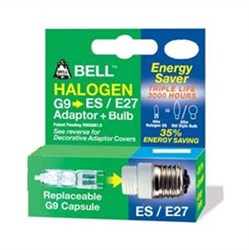We have 2 identical light fittings in our bedroom. Each fitting carries 3 x G9 Halogen. Last week my wife switched on the lights and one of the bulbs exploded. Only a small bulb but she said there was a blue flash, a loud bang and glass was absolutely everywhere, covering the floor and bed. It tripped the appropriate switch. I was away so did not see it happen.
I did not replace the bulb.
This morning the same thing happened to me. I switched on the bedroom light and one of the two remaining bulbs on that fitting exploded with a bang and flash. Our bedroom is pretty large but a piece of glass nearly hit me and I was stood by the door.
[FONT=Verdana, sans-serif]Does this sound like really dangerous bulbs or a broken fitting (or something else?)
To give you a bit more background. At least one of the bulbs in that fitting were less than 3 months old (G9 ES 42w = 60w equivalent).
The fittings themselves are approx 5 years old.[/FONT]
Grateful for comments/help
I did not replace the bulb.
This morning the same thing happened to me. I switched on the bedroom light and one of the two remaining bulbs on that fitting exploded with a bang and flash. Our bedroom is pretty large but a piece of glass nearly hit me and I was stood by the door.
[FONT=Verdana, sans-serif]Does this sound like really dangerous bulbs or a broken fitting (or something else?)
To give you a bit more background. At least one of the bulbs in that fitting were less than 3 months old (G9 ES 42w = 60w equivalent).
The fittings themselves are approx 5 years old.[/FONT]
Grateful for comments/help



